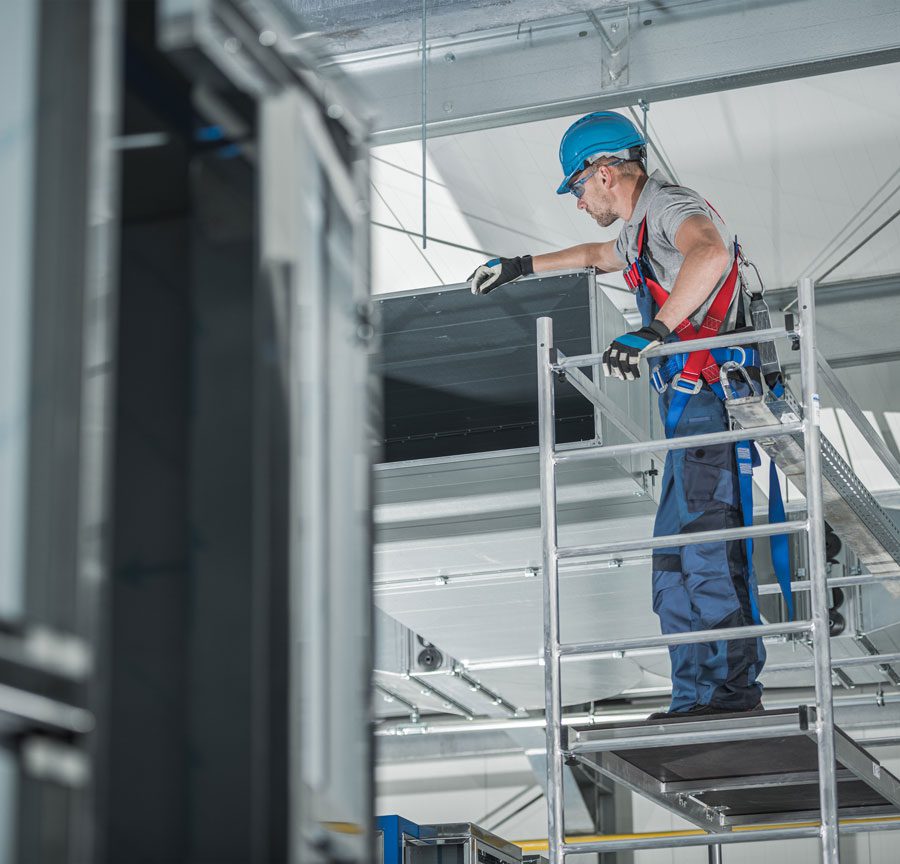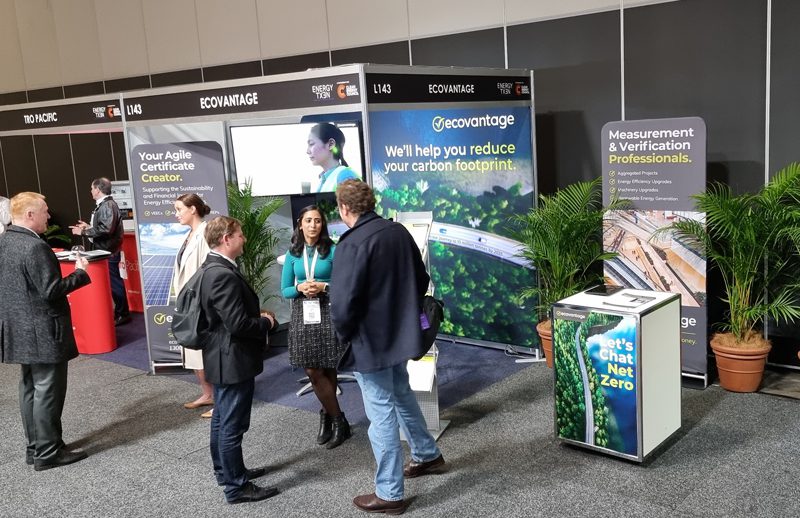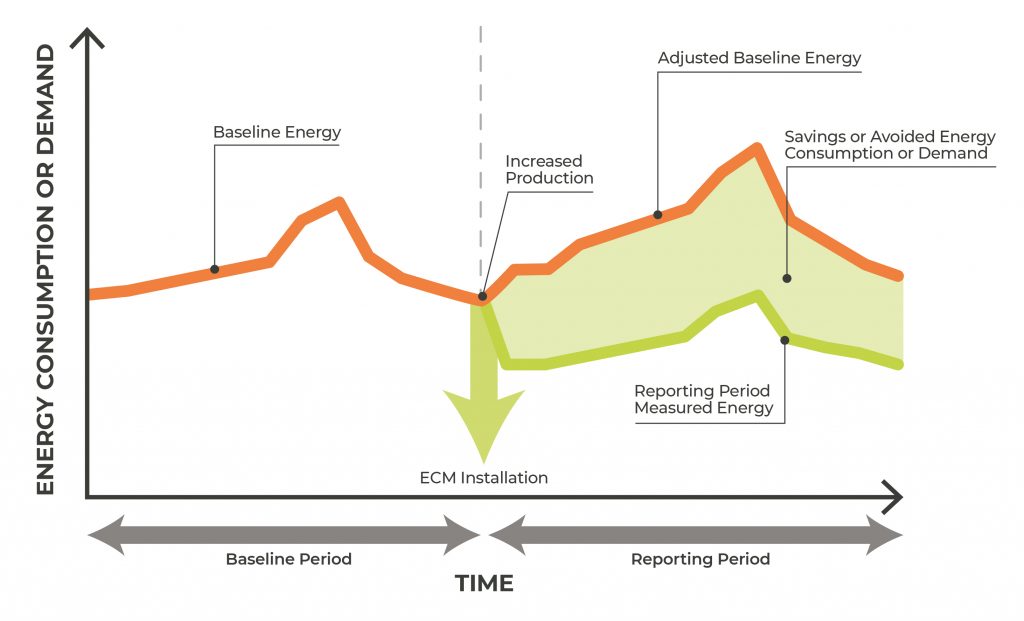What is M&V?
Measurement and verification (M&V) is the process of planning, measuring, collecting and analysing energy consumption data. Measurement of energy savings involves measuring a site’s energy usage before and after the implementation of an Energy Efficiency Measure (EEM) and data analysis (including developing mathematical models).
Verification is the process of verifying the EEM is operating as expected and continues to operate as intended. Certificates for abatement can be awarded for energy savings achieved as a result of the EEM.

Quick Nav
We make things easy for our clients, including navigating this page. Use these shortcuts to jump ahead.
How M&V Works.
Energy savings through the use of M&V involves measuring energy consumption, collecting site data and modelling site energy use before and after the implementation of an energy efficiency measure (EEM). The “Baseline Energy” is established before the implementation of the EEM and determines how and why the site uses energy through statistical modelling. This forms the Baseline Energy model. Once the implementation of an EEM is complete, the “Operating Energy” (or Reporting Period Energy) is then determined to form the Operating Energy model.
The measured savings or “Avoided Energy” is then quantified using the site data obtained (i.e. weather, production, hours of operation, etc..), the Baseline Energy model and Operating Energy model. The graph is a visual representation of the M&V process and savings determined.
The Baseline and Operating measurement periods need to capture a full cycle of the site’s energy use. The duration of each measurement period may vary depending on how the site uses energy or how an EEM operates. These range from 3 to 12 months and are assessed on a project by project basis.
Don’t want to watch? Read the transcript here.
M&V Project Types.
Our M&V service covers all types of EEM projects, including:
- Energy Efficiency Upgrades
- Heating, Ventilation, and Air Conditioning (HVAC)
- Refrigeration
- LED Lighting
- Air Compressors
- Steam Boilers
- Water Boilers & Heaters
- Variable Speed Drives (VSDs)
- Process Optimisation
- Building Management Systems (BMS)
- Heat Recovery
- Production/Process Improvement(s)
- Onsite Renewable Energy Generation
- Solar PV
- Bio Energy

Featured M&V Projects.
Creating Certificates Using M&V.
Carbon Credits
Generated based on emissions reductions from federal based schemes:
Carbon credits Internationally recognised for any scope of emissions.
White Certificates
Generated based on energy savings and emissions reductions from state based schemes:
No offset value for Carbon Neutrality and Net Zero programs. However, White Certificates can be monetised and assist in reducing capital expenditure. The emissions reduction from upgrade(s) can be used for organisations internal carbon reduction targets.

Impact of M&V On Project Viability.
Existing Heating Ventilation Air Conditioning (HVAC) equipment consisted of multiple 90kW DX units which were quite old and ineffective. These were replaced with indirect evaporative cooling units.
- Baseline annual consumption: 8,400 MWh
- Capital outlay: $1,000,000
- Annual savings: 750MWh (9%)
Comparison of Scheme Certificates
| None | VEECs | ESCs | ACCUs | |
| Certificate Revenue | n/a | $363,090 | $232,538 | $104,423 |
| Simple Payback | 12.1 years | 7.7 years | 9.3 years | 10.9 years |
The existing BMCS was >10 years old and did not control the whole centre. A new BMCS was installed, as well as new energy and water meters interfacing with the new infrastructure.
- Baseline annual consumption: 8,000 MWh
- Capital outlay: $1,200,000
- Annual savings: 1,000MWh (12.5%)
Comparison of Scheme Certificates
| None | VEECs | ESCs | ACCUs | |
| Certificate Revenue | n/a | $487,635 | $312,276 | $140,230 |
| Simple Payback | 10.9 years | 6.5 years | 8.1 years | 9.7 years |
Installation of a 1MW solar PV system where the site consumed 95% of electricity generated. Note: certificates can only be created under the Victorian Energy Upgrades program for solar PV, calculated based on self-consumption.
- Baseline annual consumption: 2,020 MWh
- Capital outlay: $1,300,000
- Annual savings: 1,140MWh (56%)
Comparison of Scheme Certificates
| None | VEECs | ESCs | ACCUs | |
| Certificate Revenue | n/a | $566,976 | n/a | n/a |
| Simple Payback | 10.4 years | 5.9 years | n/a | n/a |
Due to process changes, a 6MW boiler was no longer required, and two other gas-operated pieces of equipment were replaced with more energy-efficient equipment. The boiler was disconnected.
- Baseline annual consumption: 47,000 GJ
- Capital outlay: $1,000,000
- Annual savings: 6,000 GJ (13%)
Comparison of Scheme Certificates
| None | VEECs | ESCs | ACCUs | |
| Certificate Revenue | n/a | $269,610 | $205,390 | $56,715 |
| Simple Payback | 8.3 years | 6.1 years | 6.6 years | 7.9 years |
Revenue based on VEEC price of $95, ESC price of $30, ACCU price of $30
Assumed that all upgrades occur prior to 31 January 2025
Payment received: ACCUs annually over 7 years, VEECs and ESCs upfront after 18-24 months
ACCUs vary on which state the upgrade occurs in due to different electricity emissions factors. These figures are based on an emissions factor of 0.68 kg CO2e/kWh
Used an average electricity rate of $0.1098/kWh and natural gas rate of $19.98/GJ
Partnering with Our M&V Service.
At Ecovantage, we partner with installers, suppliers, contractors and end-users to generate energy efficiency and carbon certificates on a wide variety of EEMs that can be delivered as an M&V project.
Ecovantage will guide you through the complete M&V process to assess eligibility, ensure full compliance and provide a high level of accuracy to maximise the certificates and carbon credits created from your M&V project.
Ecovantage works with all key stakeholders involved to support end users with their capital expenditure, promote energy efficiency and renewable energy projects and reduce emissions.

End-to-End Solutions.
Supporting you from site assessment and product supply to certificate generation and trading.
About Us & Our Team.
Ecovantage is one of Australia’s largest Accredited Certificate Providers – we have the knowledge and ability to ensure your M&V project process is a smooth and successful one.
Our holistic team consists of passionate renewable energy consultants and energy efficiency experts, dedicated customer-focused account managers and qualified M&V engineers. From the initial viability study, proposal with estimated certificates and rebate value, through to compliance, application to the regulator, measurement stage and ultimately the creation of the certificates with financial revenue, we guide you with ease through all the stages.


 Victoria
Victoria New South Wales
New South Wales South Australia
South Australia Queensland
Queensland